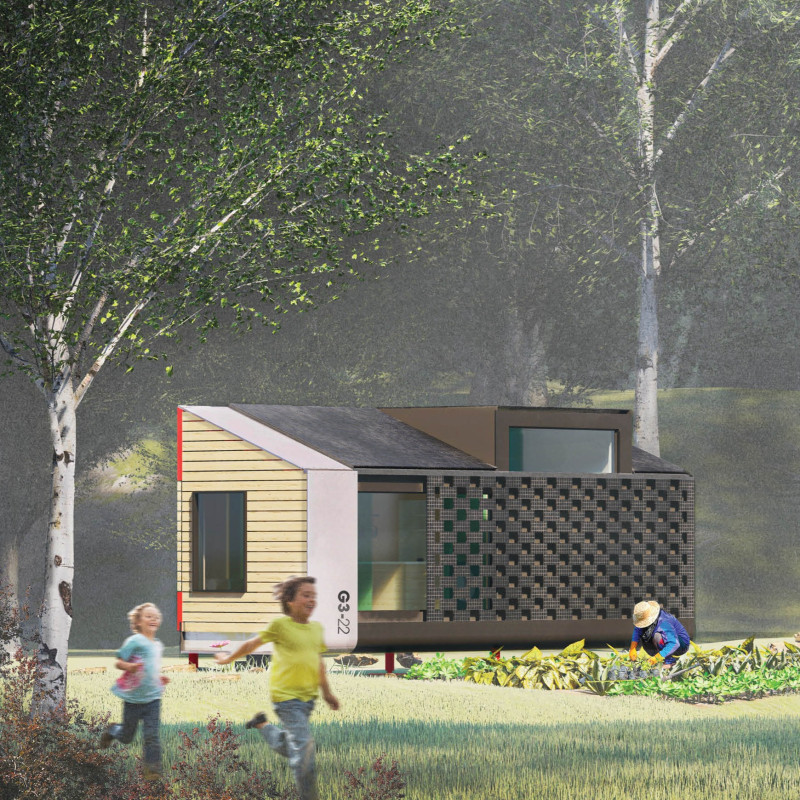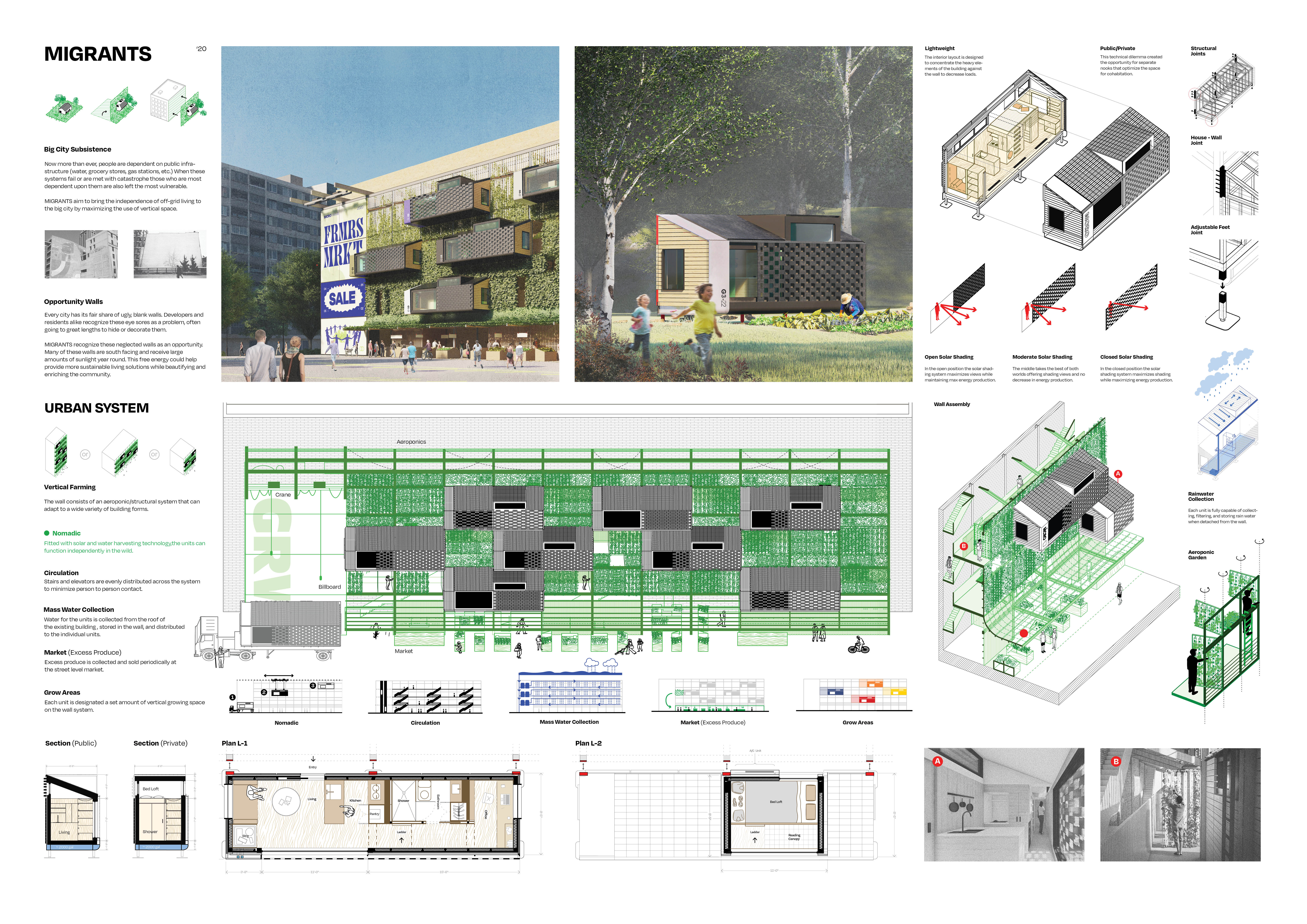5 key facts about this project
MIGRANTS is an architectural design that seeks to address the challenges of urban living through the integration of agriculture into city life. Situated in densely populated areas, the project reconsiders the use of neglected spaces, specifically turning blank walls into vertical farms. The overall aim is to enhance self-sufficiency and resilience in urban settings, creating a multifunctional space where living and growing food can coexist.
Urban Integration
The design focuses on converting unattractive walls into productive agricultural sites. These vertical farms will serve as sources of fresh produce while improving the visual character of the city. By taking advantage of south-facing walls that receive adequate sunlight, the project is able to maximize the potential for growing food, thus linking architecture with agriculture in meaningful ways.
Water Harvesting Systems
A key element of the design is its water harvesting system. Water is collected from the roofs of nearby buildings, then stored and distributed to the individual growing units. This method reduces dependence on traditional water sources and supports the pursuit of sustainability, showcasing a practical approach to resource management in urban areas.
Market Space
Incorporating a market space at street level for selling surplus produce is another important aspect of the design. This feature encourages interaction among residents and allows them to connect with the food they consume. It also supports the local economy by providing a platform for selling produce grown in the vertical farms, bridging the gap between food production and community involvement.
Circulation and Accessibility
The layout is designed with attention to circulation and accessibility. Stairs and elevators are thoughtfully placed throughout the structure, allowing for easy movement and minimizing close contact between individuals. This arrangement enhances convenience for residents and fosters social interactions, contributing to a sense of community.
Each growing unit is assigned a specific amount of space, enabling residents to actively participate in the agricultural process. This integration allows individuals to engage with farming as part of their daily routines. The design encourages a new way of thinking about living and growing food together, promoting sustainability and community engagement.



















































